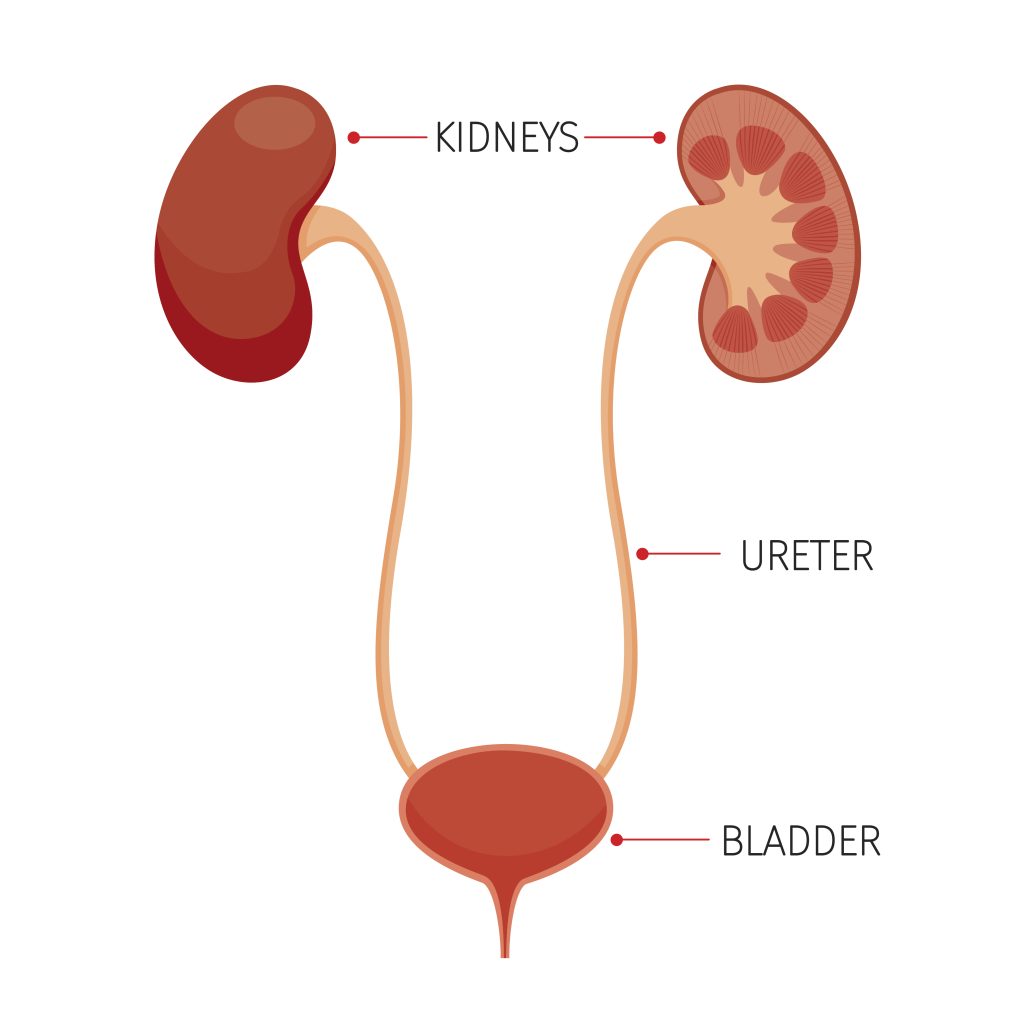
This image illustrates the key components of the human urinary system, which includes the kidneys, ureters, and bladder. Each part plays a crucial role in filtering and eliminating waste products from the body.
Kidneys:
- Located on either side of the spine, the kidneys are bean-shaped organs responsible for filtering blood, removing waste products, and balancing fluids and electrolytes. Each kidney contains millions of tiny filtering units called nephrons, which perform the essential function of urine formation.
Ureters:
- These are narrow tubes that carry urine from the kidneys to the bladder. There are two ureters, one attached to each kidney. The muscular walls of the ureters contract in waves (peristalsis) to propel urine towards the bladder.
Bladder:
- The bladder is a hollow, muscular organ that stores urine until it is ready to be expelled from the body. It can expand and contract to accommodate varying amounts of urine. When the bladder is full, nerve signals trigger the urge to urinate, and the bladder muscles contract to release urine through the urethra.
Proper kidney function is essential for overall health, as it regulates blood pressure, red blood cell production, and electrolyte balance.
Quiz
Please note that our articles are not intended to guide personal health decisions.
This content has been curated by Renes Care. Unauthorized use or reproduction is prohibited.
© Renes Care. All rights reserved.
